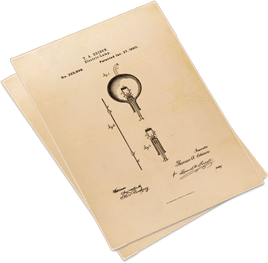Wouldn’t you like to own a trademark that can’t be challenged? The U.S. statute governing trademarks (the Lanham Act) provides that after a trademark has been registered on the Principal Register for five years, and after any 5-year period of continuous use on or with the goods and/or services identified in the registration, the registration and rights in the mark may be made “incontestable.” All you have to do is file an affidavit in the U.S. trademark office stating that your mark has been in continuous use for the previous five years, is still in use, and no one has made a claim against your rights in the mark, and pay a fee. But what does making your registration incontestable do? If your brand is important to you and your business, incontestability is almost always worth the one-time cost because, with a couple of rare exceptions, an incontestable registration can only be challenged and cancelled upon one or more of just five, very difficult to substantiate grounds. To cancel an incontestable registration, the petitioner must prove:
1) That the mark has become the generic name for the goods or services for which it is registered (Xerox, and most recently Google (What’s the meaning of “Google”), have fought hard to maintain the character of their trademarks as an indicator of the exclusive source of the goods and services they bring to market); or
2) That the mark is functional (this applies almost exclusively to “configuration” marks where the mark is the shape of the goods or of the package they are sold in and to marks that are the color or scent or sound of the goods or services); or
3) That the mark has been abandoned (a mark is considered abandoned if its use in interstate trade is discontinued with no intent to resume use; intent can be inferred from circumstances, such as the duration of non-use); or
4) That the registration was obtained with the intention to defraud the U.S. Trademark Office (the statute simply says “obtained fraudulently,” but courts have held that the declarations and representations made in gaining the registration must be knowingly intentionally fraudulent); or
5) That the mark is being used by its owner, or with its owner’s knowledge and permission, deceptively to intentionally misrepresent where the goods or services come from (for example, you tear the labels off someone else’s goods and substitute your own labels, or you knowingly allow someone to use your mark without exerting any control of how and where they use it).
In practical terms, for most registration owners, this usually means that your opponent must prove that you have committed an intentional act of fraud on the trademark office (e.g., you knowingly claimed use in interstate commerce before you actually made such use), or that you have abandoned the mark (not using your mark in interstate trade for the 3 consecutive years is, according to the Lanham Act, “prima facie evidence of abandonment”).
Incontestability provides a powerful set of rights, and while an “incontestable” registration is not truly, literally, incontestable, it is substantially more secure than a registration that has not been declared incontestable.


